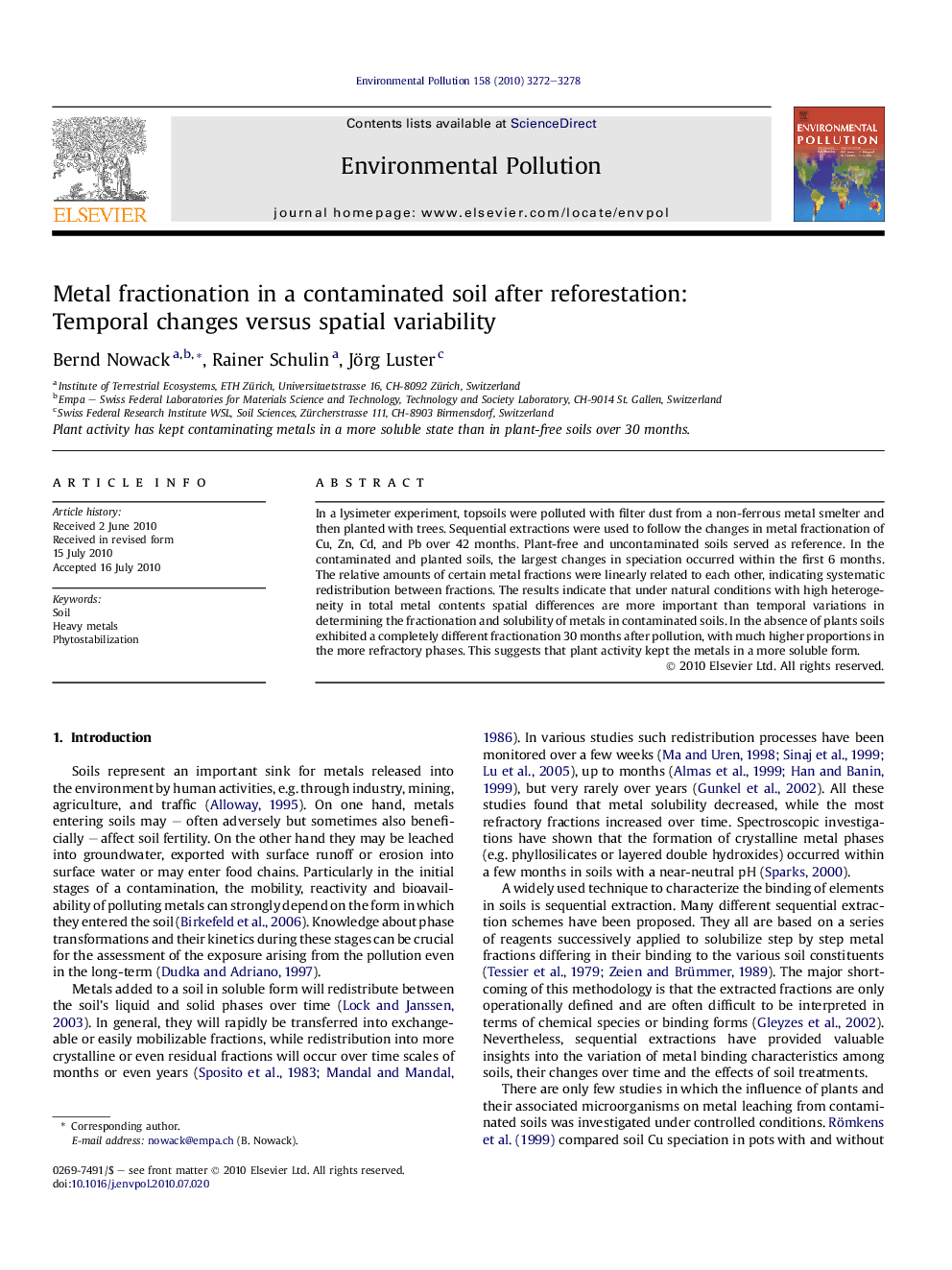| Article ID | Journal | Published Year | Pages | File Type |
|---|---|---|---|---|
| 4424932 | Environmental Pollution | 2010 | 7 Pages |
In a lysimeter experiment, topsoils were polluted with filter dust from a non-ferrous metal smelter and then planted with trees. Sequential extractions were used to follow the changes in metal fractionation of Cu, Zn, Cd, and Pb over 42 months. Plant-free and uncontaminated soils served as reference. In the contaminated and planted soils, the largest changes in speciation occurred within the first 6 months. The relative amounts of certain metal fractions were linearly related to each other, indicating systematic redistribution between fractions. The results indicate that under natural conditions with high heterogeneity in total metal contents spatial differences are more important than temporal variations in determining the fractionation and solubility of metals in contaminated soils. In the absence of plants soils exhibited a completely different fractionation 30 months after pollution, with much higher proportions in the more refractory phases. This suggests that plant activity kept the metals in a more soluble form.
